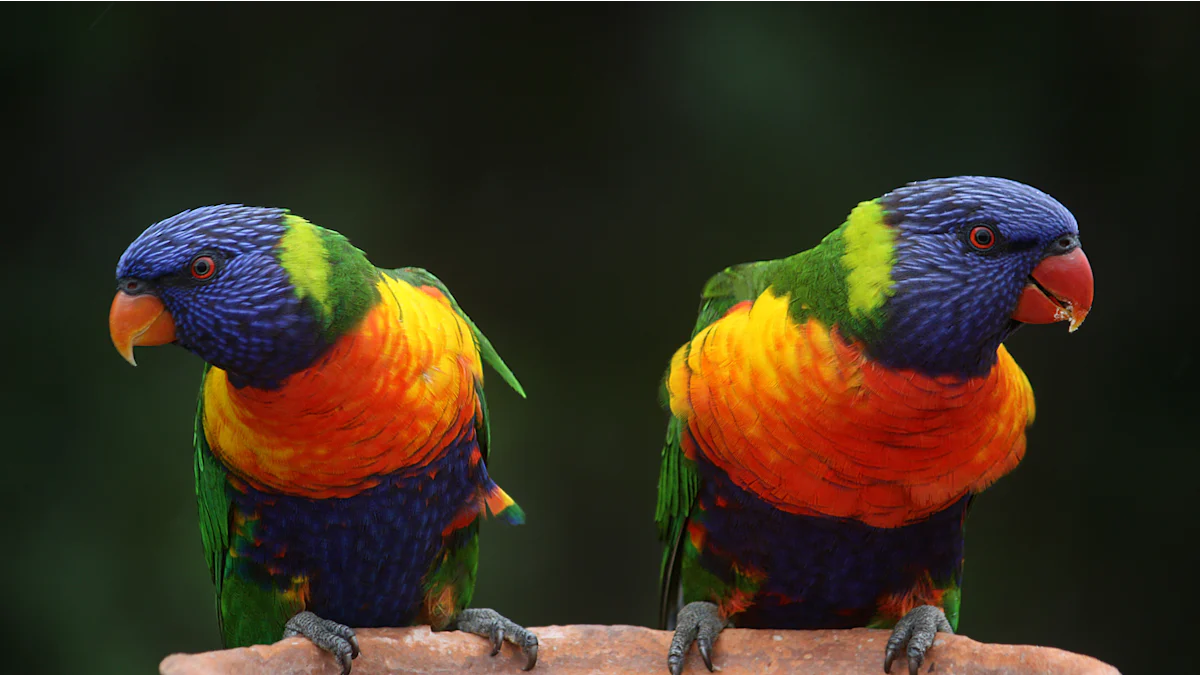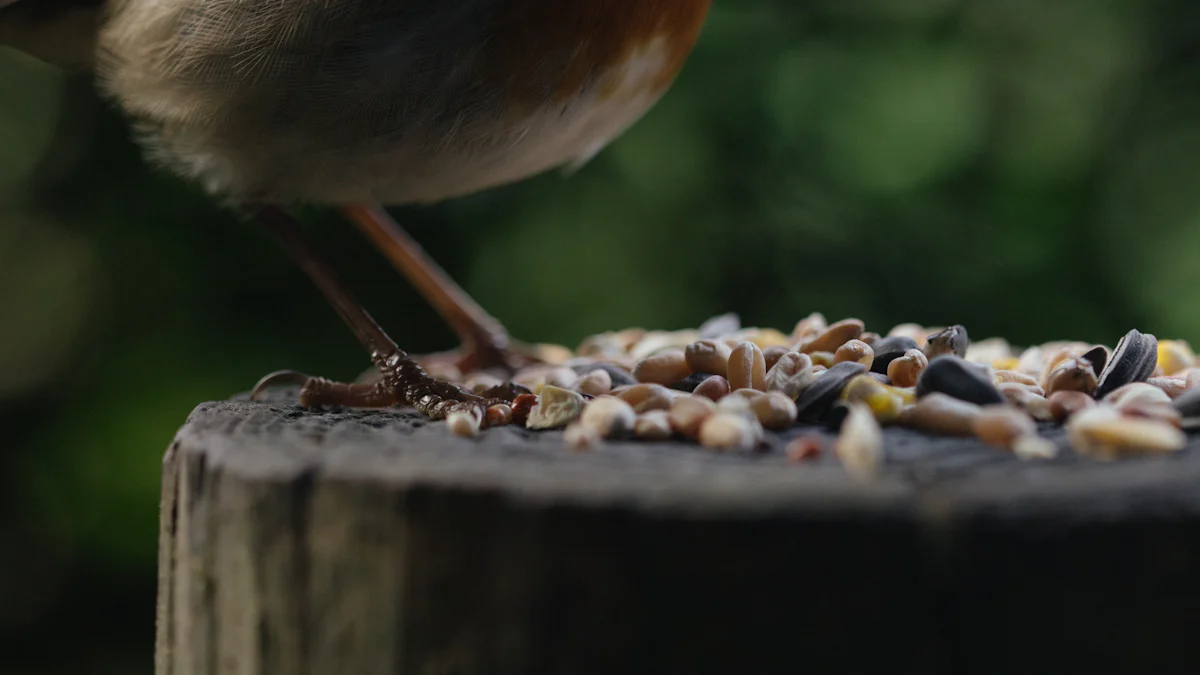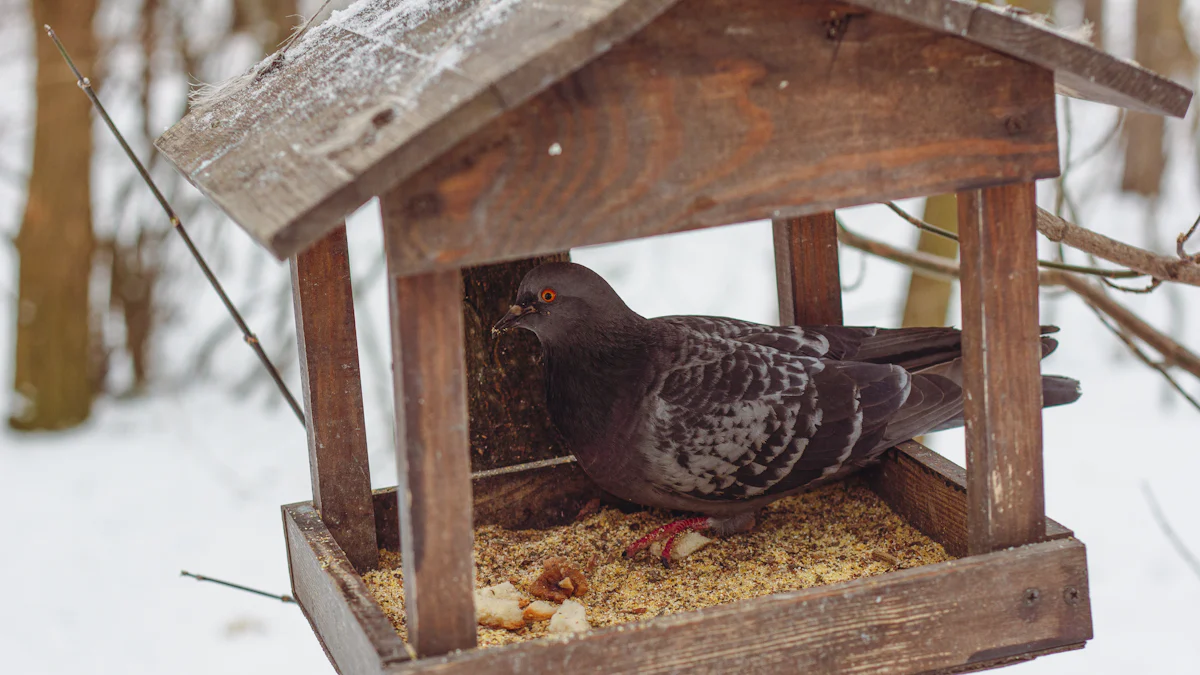
Dried Mealworms Wild Bird Food offers a nutritious and effective way to attract wild birds to your yard. Packed with protein and essential fatty acids, they provide the energy birds need to thrive. Many bird species, including Robins and Bluebirds, find this wild bird food irresistible. Watching these feathered visitors enjoy their meal can bring immense joy and a deeper connection to nature. By incorporating dried mealworms into your feeding routine, you not only support the health of local birds but also create a vibrant and lively backyard environment.
Key Takeaways
- Dried mealworms are a nutritious food source for wild birds, packed with protein and essential fatty acids that support their health and energy needs.
- Offering dried mealworms can attract a diverse range of bird species, including robins, blue jays, and wrens, enhancing your birdwatching experience.
- Choose high-quality, natural, and non-GMO dried mealworms to ensure the best nutrition for visiting birds.
- Rehydrating dried mealworms before serving can make them more appealing, especially during nesting and breeding seasons.
- Utilize specialized bird feeders or ground feeding techniques to effectively serve dried mealworms and attract more birds to your yard.
- Create a bird-friendly environment by planting native vegetation, providing water sources, and reducing pesticide use to support local wildlife.
- Maintain consistency in feeding and adjust your offerings seasonally to meet the changing needs of birds throughout the year.
Why Dried Mealworms Wild Bird Food Is Ideal for Attracting Birds
Nutritional Benefits for Wild Birds
Dried mealworms provide a powerhouse of nutrition for wild birds. These insects are rich in protein, which plays a vital role in maintaining strong feathers and overall health. Birds rely on protein to repair their bodies and grow vibrant plumage. Without enough protein, their feathers may become dull and brittle, making it harder for them to fly or stay warm.
In addition to protein, dried mealworms contain essential fatty acids. These fats supply birds with the energy they need, especially during demanding periods like migration or breeding seasons. For example, when birds are raising their young, they expend significant energy finding food and protecting their nests. Offering dried mealworms during this time can help them meet these energy demands.
Another benefit of dried mealworms is their natural composition. They are 100% all-natural and non-GMO, making them a safe and healthy supplement to a bird’s diet. By including dried mealworms in your feeding routine, you ensure that wild birds receive a balanced and nutrient-rich food source.
Appeal to a Variety of Bird Species
Dried Mealworms Wild Bird Food attracts a wide range of bird species to your yard. Birds such as robins, blue jays, chickadees, and wrens are naturally drawn to mealworms due to their resemblance to live insects. These species thrive on insect-based diets, making mealworms an irresistible treat.
Ground-feeding birds, like robins, often forage for insects in the soil. Placing dried mealworms in a dish or on a platform feeder mimics their natural feeding habits, encouraging them to visit your yard. Similarly, insect-eating birds like bluebirds and woodpeckers find dried mealworms appealing, especially when other food sources are scarce.
Offering dried mealworms consistently can also increase the diversity of birds in your yard. Birds that might not typically visit feeders, such as wrens or nuthatches, may stop by to enjoy this protein-packed snack. This variety not only enhances your birdwatching experience but also supports the local ecosystem by providing essential nutrients to different bird species.
By incorporating dried mealworms into your feeding routine, you create an inviting environment for a diverse array of birds. Their nutritional value and universal appeal make them an excellent choice for attracting feathered visitors to your yard.
Selecting and Preparing Dried Mealworms for Wild Birds
Choosing High-Quality Dried Mealworms
Selecting the right dried mealworms ensures that the birds visiting your yard receive the best nutrition. High-quality dried mealworms are 100% natural, non-GMO, and free from additives or preservatives. These features make them a safe and healthy choice for wild birds. When shopping, look for mealworms that appear clean, whole, and uniform in size. Broken or discolored mealworms may indicate lower quality or improper storage.
Packaging also plays a crucial role in maintaining freshness. Airtight, resealable bags help preserve the nutritional value and prevent contamination. Some brands even provide detailed product descriptions, highlighting the protein and essential fatty acid content. This information can guide you in choosing a product that meets the dietary needs of wild birds.
Buying from reputable suppliers ensures consistent quality. Many bird enthusiasts recommend purchasing from well-known companies that specialize in bird food. These suppliers often prioritize sustainability and nutrition, offering mealworms that support the health of your feathered visitors. By investing in premium dried mealworms, you create a reliable food source that attracts a variety of bird species.
Rehydrating Dried Mealworms for Better Appeal
Rehydrating dried mealworms can make them more appealing to birds, especially those that prefer moist food. This simple process restores some of the natural texture and flavor, mimicking live insects. To rehydrate, place the dried mealworms in a bowl and cover them with warm water. Let them soak for about 20-30 minutes until they become plump and soft. Drain any excess water before serving.
Rehydrated mealworms are particularly beneficial during nesting and breeding seasons. Birds expend significant energy during these periods and often seek out high-moisture foods to stay hydrated. Offering rehydrated mealworms can help meet these needs, making your yard a preferred feeding spot.
Although rehydrating adds an extra step, it enhances the overall feeding experience for birds. It also increases the chances of attracting species that might otherwise ignore dried mealworms. For convenience, you can prepare small batches in advance and store them in the refrigerator for up to a day. This method ensures that you always have a fresh and enticing treat ready for your feathered guests.
Effective Ways to Serve Dried Mealworms Wild Bird Food

Using Specialized Bird Feeders
Specialized bird feeders designed for mealworms can make feeding more efficient and appealing. These feeders often feature small trays or mesh compartments that hold the mealworms securely. This design prevents spillage and keeps the food visible to birds. You can find feeders specifically made for dried mealworms at garden centers or online stores. Look for models with weather-resistant materials to ensure durability.
Using a specialized feeder also helps deter unwanted visitors like squirrels. Feeders such as the Squirrel Buster Standard are effective in keeping squirrels away while allowing birds easy access. Place the feeder in an open area where birds feel safe but predators cannot reach. Regularly clean the feeder to maintain hygiene and prevent mold or bacteria from contaminating the food.
By using a dedicated feeder, you create a reliable feeding station that attracts a variety of bird species. This method ensures that the mealworms remain fresh and accessible, increasing the chances of frequent bird visits.
Ground Feeding Techniques
Ground feeding is another effective way to serve dried mealworms. Many birds, such as robins and sparrows, naturally forage on the ground. To mimic this behavior, scatter mealworms in a shallow dish or directly on the soil. Choose a spot that is visible and safe from predators. Avoid placing the food too close to bushes or tall grass where cats or other animals might hide.
For added convenience, use a platform feeder. This type of feeder elevates the food slightly off the ground, keeping it clean and dry. It also makes the mealworms more noticeable to birds flying overhead. Ground feeding works well during the winter months when natural food sources are scarce. Birds will appreciate the easy access to a high-protein snack like dried mealworms.
Monitor the feeding area regularly to ensure it stays clean. Remove any uneaten food to prevent attracting pests. Ground feeding not only supports ground-foraging birds but also creates an opportunity to observe their natural behaviors up close.
Mixing Mealworms with Other Bird Foods
Combining dried mealworms with other bird foods can attract a wider variety of species. Mix mealworms with traditional birdseed, suet, or nuts to create a balanced feeding option. This combination appeals to both insect-eating birds and seed-eating species. For example, bluebirds and woodpeckers may be drawn to the mealworms, while finches and cardinals enjoy the seeds.
Layer the mixture in a feeder or sprinkle it on a platform. This method encourages different types of birds to visit your yard. During colder months, consider mixing mealworms with high-energy foods like suet. This provides birds with the extra calories they need to stay warm and active.
Experiment with different combinations to see what works best for your local bird population. Keep the mixture fresh by storing it in an airtight container. Mixing mealworms with other foods not only enhances the nutritional value but also increases the diversity of birds visiting your yard.
Practical Tips for Attracting More Birds to Your Yard

Strategic Feeder Placement and Maintenance
Placing feeders strategically can significantly increase bird activity in your yard. Position feeders in areas where birds feel safe, such as near trees or shrubs. These natural elements provide shelter and allow birds to retreat quickly if they sense danger. Avoid placing feeders too close to dense vegetation, as predators like cats may use it as cover.
Keep feeders at a height that is accessible to birds but out of reach of ground predators. A height of 5-6 feet works well for most species. Ensure the feeders are visible from above so birds flying overhead can spot them easily. If you use multiple feeders, space them apart to reduce competition among birds.
Regular maintenance is essential for keeping feeders clean and safe. Wash feeders weekly with warm, soapy water to remove dirt and bacteria. Rinse thoroughly and let them dry completely before refilling. Check for mold or spoiled food, especially during humid weather. Clean feeders not only attract more birds but also prevent the spread of diseases.
Creating a Bird-Friendly Environment
A bird-friendly environment encourages more species to visit your yard. Start by planting native trees, shrubs, and flowers. These plants provide natural food sources like berries, seeds, and nectar. They also offer nesting sites and shelter, making your yard more inviting to birds.
Add a water source, such as a birdbath or small fountain. Birds need water for drinking and bathing, especially during hot or dry seasons. Place the water source in a shaded area to keep it cool and clean it regularly to prevent algae buildup. Moving water, like a fountain, can attract birds more effectively than still water.
Consider reducing the use of pesticides in your yard. Pesticides can harm insects, which are a vital food source for many bird species. By creating an insect-friendly habitat, you indirectly support the birds that rely on them. A diverse and natural environment will make your yard a haven for wildlife.
Feeding Consistency and Seasonal Adjustments
Consistency in feeding plays a key role in attracting and retaining birds. Refill feeders regularly to ensure a steady food supply. Birds often return to reliable feeding spots, so maintaining consistency helps build trust. Monitor the feeders daily to avoid running out of food.
Adjust your feeding routine based on the season. During winter, birds need high-energy foods to stay warm. Offer options like suet, nuts, and Dried Mealworms Wild Bird Food to meet their nutritional needs. In spring and summer, focus on foods that support nesting and breeding, such as mealworms and seeds.
Observe the bird species in your area to understand their seasonal preferences. Some birds migrate and may only visit during specific times of the year. Tailoring your feeding strategy to their needs ensures a welcoming environment throughout the year.
Using dried mealworms to attract wild birds offers countless benefits. You provide a high-protein, energy-rich food source that supports their health and vitality. By following these tips, you can create a welcoming environment that draws a variety of bird species to your yard. Watching birds like bluebirds, wrens, and robins enjoy their mealworms can bring immense joy and deepen your connection to nature. Take the first step today and transform your yard into a lively haven for feathered friends. Embrace the beauty of birdwatching and foster a meaningful bond with the natural world around you.


